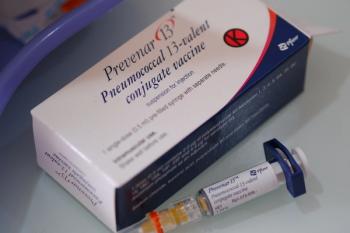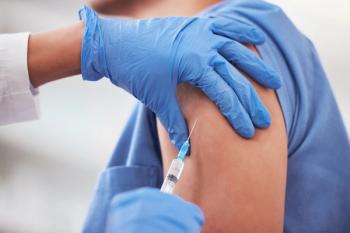
Future Preventive Strategies to Reduce RSV Burden in Pediatric Health Care
Recognizing the challenges and needs associated with combating and preventing RSV may help reduce health care and patient burdens.
Respiratory syncytial virus (RSV) in pediatric patients remains a significant global burden, especially in hospitalized patients, but research, maternal immunization, and future efforts are a way to combat and prevent future outbreaks, according to a review published in Paediatric Respiratory Reviews.1
For young children, RSV remains a leading cause of hospitalization, bronchiolitis, and pneumonia. The burden of RSV is great, with an estimated 33 million lower respiratory tract infections, 3.6 million hospital admissions, and 101,400 deaths globally associated with RSV each year for children younger than 5 years. Additionally, in 2017, the estimated global costs of RSV-related infections were more than 4.8 billion euros.
A team of investigators from Montreal Children’s Hospital-McGill University Health Centre in Canada conducted a review of previous, current, and on-going research efforts for the pediatric immunization against RSV.
RSV, like all members of the pneumoviridae family, is a single-stranded negative-sense RNA virus. Two transmembrane glycoproteins composing of its bilipid envelope, G attachment protein and F fusion protein, are responsible for neutralizing host antibodies. While the G protein attaches the virus to the host’s ciliated cells in the airway, the F protein allows the virus to fuse with the host cell membranes. RSV is divided into subtypes A and B based on its antigenic variability in response to monoclonal antibodies (mAb), with greater variability in the attachment of the glycoprotein G. The significant variability of glycoprotein G makes vaccine development difficult; however, F fusion protein is more similar between viral strains and is the preferred protein used in the development of immune therapies.
In 1998, the United States Food and Drug Administration approved palivizumab, the first humanized mAb that targeted the F protein. It is used in many high-income countries to protect against severe RSV infections in areas with higher-risk populations. While indications vary across countries, palivizumab is used predominantly to treat premature infants with or without bronchopulmonary disease as well as infants with hemodynamically significant congenital heart disease.
Although several clinical trials have ameliorated the efficacy of this mAb, monthly injections of palivizumab are needed during the RSV season to maintain active mAb in circulation. “This requires significant resources from both the families and healthcare teams, especially with the interseasonal activity of RSV during COVID-19 pandemic,” the review authors added.
Nirsevimab, a new mAb, was approved in the United Kingdom and North America to prevent RSV in neonates and infants. It targets the pre-F protein and has an extended half-life compared with palivizumab and, therefore, only requires a single dose in an RSV season. Several ongoing clinical trials including the Evaluate the Safety and Efficacy of Nirsevimab in Healthy Preterm and Term Infants in China (CHIMES;
“Furthermore, a third mAb with a similar structure to nirsevimab is currently in a phase 3 trial: clesrovimab (ClinicalTrials.gov Identifier, NCT04938830) recruiting 1000 children younger than 1 year of age in multiple countries worldwide,” the authors noted.
Despite the continued research for treatment in neonates and infants, there are no approved vaccines for active immunizations against RSV for children although “multiple clinical trials are currently in the early phases (phase 1 and 2) for active immunization in children using live-attenuated, nucleic acid ([messenger]RNA) and recombinant vector vaccines,” the authors noted.
There are, however, 2 newly approved vaccines for adults older than 60 years both of which are bivalent protein-based subunits of stabilized pre-F protein from antigenic groups A and B. Vaccines have been approved in the United States, Canada, and Europe since 2023 and ongoing phase 3 trials (RENOIR,
A final immunization option the authors noted was that of maternal vaccination. “The goal is to increase the infant’s serum antibody concentration after birth by increasing transplacental antibody transfer,” they wrote. Although successful transplacental RSV antibody transfers have been recorded, the correlation between the antibody concentration and severity of the disease onset is still unclear. A recent trial using the approved stabilized pre-F vaccine showed promising results for infants with medically attended severe RSV-associated lower respiratory tract illnesses but did not show statistical significance for medically attended RSV-associated lower respiratory tract infections.
Further research and the findings of ongoing clinical trials in different age groups will help direct immunization recommendations to combat and prevent RSV.
References
1. Bourassa MH, Lands LC. Preventative therapies for respiratory syncytial virus (RSV) in children: where are we now? Paediatr Respir Rev. Published online August 29, 2023. doi:10.1016/j.prrv.2023.08.005
2. Study to evaluate the efficacy, immunogenicity, and safety of RSVpreF in adults (RENOIR). ClinicalTrials.gov. Updated September 5, 2023. Accessed September 23, 2023. https://www.clinicaltrials.gov/study/NCT05035212
Newsletter
Pharmacy practice is always changing. Stay ahead of the curve with the Drug Topics newsletter and get the latest drug information, industry trends, and patient care tips.

















































































































